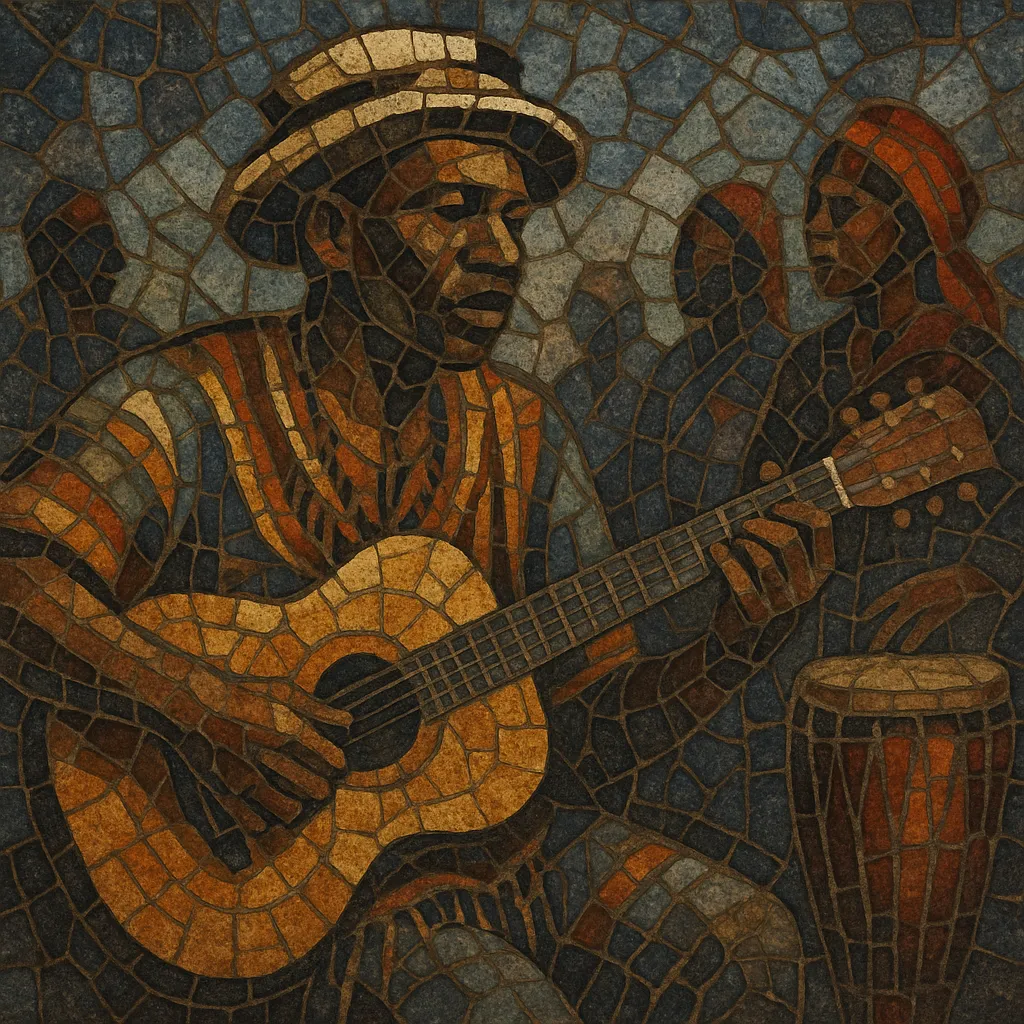Maskanda (also spelled Maskandi) is a Zulu guitar-driven folk style from South Africa that blends rural traditions with urban migration-era storytelling.
It is characterized by rapid, percussive fingerpicking on acoustic or electric guitar, a free-tempo introductory flourish (often called an izihlabo), and narrative vocals that frequently incorporate Zulu praise poetry (izibongo), call-and-response refrains, and social commentary.
Typical ensembles add bass, drums, concertina and/or violin, producing a bright, rhythmic groove that supports the troubadour-like lead singer. The music is both danceable and reflective, carrying the feel of the countryside into the city while addressing the lived realities of working-class Zulu communities.
Maskanda’s roots lie in rural Zulu musical practices and praise poetry that predate recording, alongside the emergence of guitar music among migrant laborers. As Zulu workers traveled between KwaZulu-Natal and industrial centers like Johannesburg, the portable guitar became a vehicle for personal storytelling and social news, gradually shaping a distinct picking style and song form.
By the 1960s, pioneering figures such as John Bhengu (Phuzushukela) began recording, helping codify the genre’s key traits: the free-time guitar prelude (izihlabo), fast, syncopated picking, and verse lines that weave in izibongo. Urban band formats—bass, drums, concertina, and violin—expanded the sound, while neighboring South African styles (marabi, mbaqanga) influenced arrangements and harmony.
Maskanda surged in national popularity in the 1990s with artists like Phuzekhemisi, Bhekumuzi Luthuli, Mfaz’ Omnyama, and groups such as Izingane Zoma. Songs often addressed politics, migration, love, rivalry, and moral debates, turning the genre into a communal forum. Stage costumes, dance steps, and distinctive band identities became part of its appeal.
New generations (e.g., Khuzani Mpungose) modernize production while preserving core storytelling and guitar technique. Maskanda continues to intersect with other South African genres—occasionally sampled or referenced in kwaito and Durban’s club scenes—while remaining a proudly Zulu cultural expression with a thriving live circuit and festival presence.


